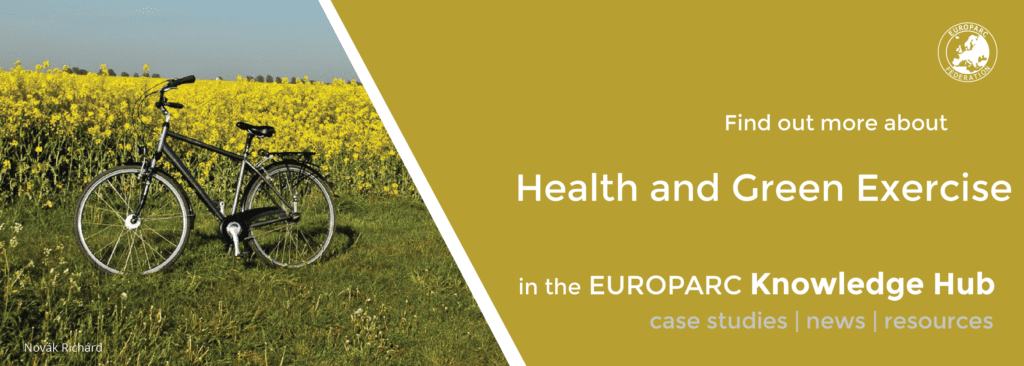EUROPARC’s family keeps growing…check out our new members!
Get to know these 4 new members from Bulgaria, Croatia, Spain, and Switzerland who recently joined the EUROPARC network. Welcome!
BULGARIA
National Protected Areas Control Agency
This new organization was created to assist government institutions and NGO’s in providing active control and monitoring of Bulgaria’s Protected Areas, biodiversity, and ensuring the sustainable use of natural resources. The agency trains mountain rangers and mountain patrols and runs a big training facility in the Balkan Mountains near Sofia, Bulgaria.
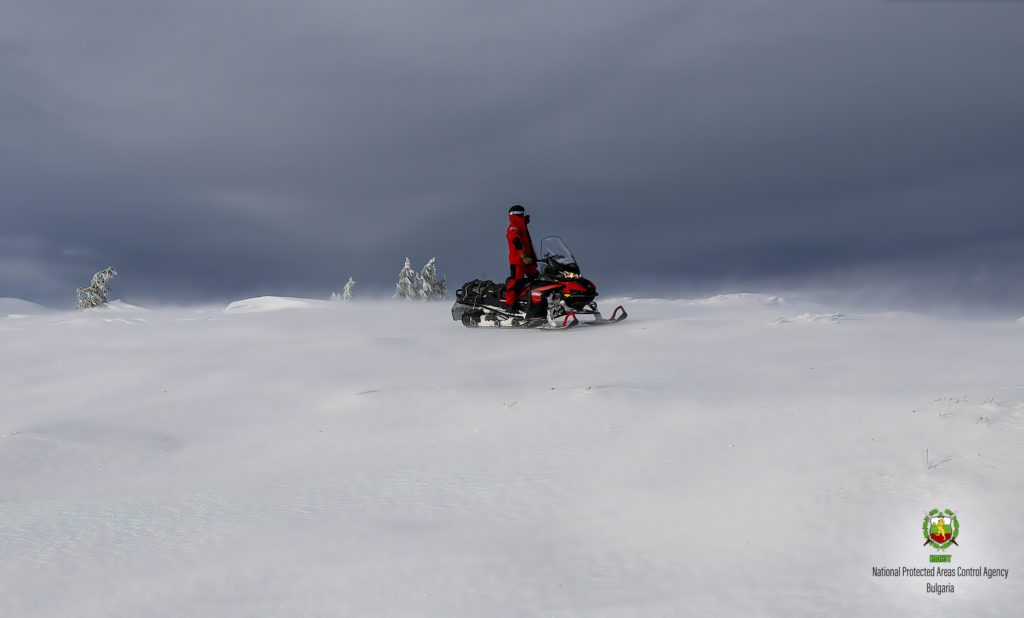
@Nikolai Zlatkov. Mountain ranger on winter patrol, on the main Balkan ridge, 2200 meters altitude, “Zapadna Starat Planina” Protected Area, Bulgaria.
CROATIA
Public Institution Nature of Šibenik – Knin County
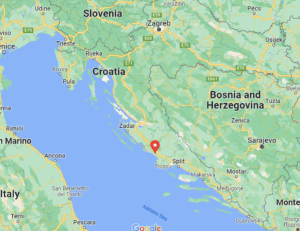
Institution location
The Public Institution Nature of the Šibenik-Knin County was established in 2007.
The primary objective of the organisation is to protect, maintain and preserve the authenticity of the natural environment and to ensure the sustainable use of natural and cultural goods in six designated sites, one nature monument and nearly sixty Natura 2000 areas. In its management area, there is also St Nicholas’ Fortress, a cultural and historical monument under UNESCO protection.
These areas burst with diversified and unique flora and fauna as well as exceptional geomorphological heritage.
SPAIN
Starlight Stellar Park Camino Barranco de Badajoz
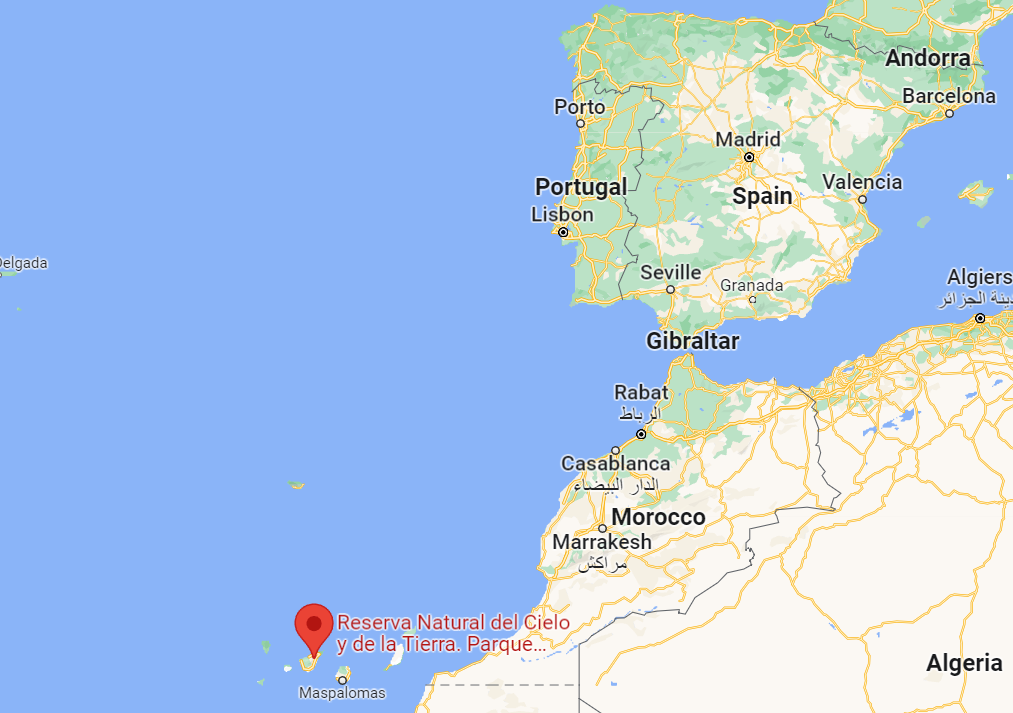
Park location
The Parque Estelar Starlight Camino Barranco de Badajoz is located within the Reserva Natural del Cielo y la Tierra (Heaven and Earth Nature Reserve) in the Güímar valley, Tenerife, Spain. Certified by the Starlight Foundation, it is the first astronomical park in the Canary Islands, where activities are organised to observe the night sky, lunar craters, sunspots, and astronomical events.
The Park also organises excursions to the Barranco de Badajoz and the Caserío de San Juan, with the aim to preserve the natural and cultural heritage, by raising awareness about nature, tradition, culture, and customs of our ancestors.
Our mission is to Protect, Conserve and Preserve Nature, to ensure a legacy for present and future generations and to guarantee that all of the resources we have received are returned to Nature.
SWITZERLAND
Greifensee-Foundation
As an NGO, the Greifensee Foundation is committed to the preservation and further development of the Greifensee landscape and manages the associated nature reserve on behalf of the Canton of Zurich. The rangers control and supervise compliance with the protection ordinances at Lake Greifensee and inform visitors about the Protected Area. The Greifensee Foundation also runs the Silberweide Nature Station and the Junior Ranger and Young Ranger Programme.

Der See im Sommer, Greifensee-Stiftung, Switzerland
The Greifensee is the largest Protected Area in the canton of Zurich and has been a national water and migratory bird reserve since 2009. Thanks to the undeveloped banks, reed belts, fens and reed meadows have been preserved.
Would you like to be part of the biggest network of Protected Areas in Europe?
Read all about it on this page.
UN make a decisive move on Right to a Healthy Environment
Scarpe escaut Nature Regional Park, France © Samuel Dhote
On 28 July, the UN General Assembly (UNGA) recognized a clean, healthy and sustainable environment as a universal human right.
What is the declaration?
This UNGA declaration states that everyone has a right to a healthy environment. This includes clean air and water, as well as a stable climate.
As the UNGA is the UN’s only forum with representation of all its 193 Member States, this resolution is historic.
Inger Andersen, the Executive Director of the UN Environment Programme (UNEP) declared:
The resolution will trigger environmental action and provide necessary safeguards to people all over the world. It will help people stand up for their right to breathe clean air, to access safe and sufficient water, healthy food, healthy ecosystems, and non-toxic environments to live, work, study, and play.
What does it mean?
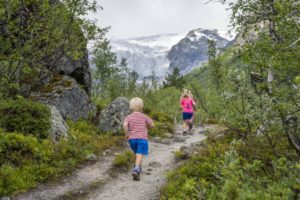
Bergsetbreen Glacier, Norway. Photo Vegard Aasen
Though not legally binding, this resolution paves the way for an acceleration toward the goal of an inclusive, green recovery. How? For instance, by incorporating the right to a healthy environment into national constitutions. People could then use national human rights law against environmentally destructive policies.
EUROPARC welcomes this normative development and reaffirms its commitment to human rights. As the representative voice of Protected Areas in Europe, we have long advocated for a healthy nature, to support a healthy society.
What is EUROPARC doing?
On the advocacy side, EUROPARC became the chair of the Environment, Climate Change, Heritage and Health Committee (ECCH&H) at the Conference of INGOs at the Council of Europe last year. The objective of this Committee is that:
human rights of European citizens are upheld with respect to the impacts of climate change, biodiversity loss and the connection between people and natural and cultural heritage.
The UN resolution further legitimises this important work.
EUROPARC invests energy and resources on several initiatives for Protected Areas, focusing on topics such as climate change adaptation, youth or health & nature, just to name a few.
Michael Hošek EUROPARC Federation President stated:
This welcome declaration will be an impetus to ensure people have access to a clean and safe environment, not only close to where they live, but in the nature that surrounds them. Protected Areas already give millions of Europeans access to a “clean, healthy and sustainable environment” and we need to ensure our parks are valued and invested in, to secure these nature and health benefits.
What can your Protected Area do?
Healthy Parks make Healthy People and are well suited to lead us into a green future – EUROPARC is there to support in this pathway.
The right access to a “clean, healthy and sustainable environment” is important to us all, so:
- If you want to know more
- If you want to contribute
Then, have a look at our resources on Climate Change Adaptation, join the different EUROPARC initiatives, like Healthy Parks Healthy People Europe or the programmes for Young People in Protected Areas.
Share your knowledge through any of our initiatives!
Together, we can create the green and healthy future of tomorrow.
How Protected Areas can contribute to the new EU Nature Restoration targets
On June 22, 2022, the European Commission proposed a new Nature Restoration Law, an essential part of the EU Green Deal and Biodiversity Strategy for 2030.
The EU Nature Restoration law
The Commission set multiple targets to restore degraded ecosystems such as wetlands, rivers, forests, grasslands, marine ecosystems, and the species they host. This proposal combines both general and specific objectives, ensuring long-term nature recovery and specific implementation measures.
By 2030, these measures should extend to at least 20% of the land and water areas in the EU, and by 2050, they should apply to all ecosystems that require restoration.
Today, for the first time ever, we are proposing a law that would require all Member States to restore nature. We need to repair the 80% of our nature that’s in bad shape, and bring nature back to our cities, towns, forests, agricultural land, seas, lakes, and rivers – the nature that our citizens want and need.
Executive Vice-President Frans Timmermans, statement from press release of the new proposal.
Why do we need this?
Unfortunately, 81% of habitats in Europe are in a bad state despite the Birds and Habitats Directives having restoration goals. A review of the Biodiversity Strategy for 2020 highlighted the voluntary nature of these goals as the core problem and suggested a legally binding tool: The EU Nature Restoration Law
This is the first new environmental legislation since 2015 and will be relevant for areas inside and outside Natura 2000 protected areas, for urban green spaces and for agricultural landscapes. Once the regulation is approved, the work can start immediately and the law can be enforced without having to wait for national laws to be laid down first (as would be the case for a Directive).
Read the full proposal here or check out the EU Factsheet here.
What are the key targets?
- restore habitats and species protected by the EU nature legislation
- reverse the decline of pollinators by 2030
- no net loss of green urban spaces by 2030 and a minimum of 10% tree canopy cover in European cities
- improved biodiversity on farmlands
- restore drained peatlands
- healthier forests with improved biodiversity
- at least 25.000 km of free-flowing rivers by 2030
- restore seagrasses and sea floors
What are the next steps?
The very next step is that it needs to be approved by the Council and the EU Parliament. Only then is it adopted.
Each Member State is required to submit a National Restoration Plan to the Commission two years after the adoption and then monitor their progress. The first EU report has already been set for June 2031.
You can find more information on timelines and the implementation process here.
How can Protected Areas contribute?
The first step in halting and reversing biodiversity loss is to stop any downward trends. The second step is to restore what was lost. Protected Areas are already doing this! They will be examples of the gold standard of a “good ecological status” for many habitat types.
Protected Areas are also leading the way with restoration efforts and can share their journey, best practices and expertise. This was what the 11 experts from across Europe who gathered for the EUROPARC 2022 Siggen Seminar discussed earlier this year.
Read more about it here or check out the outcomes presentation here.
Additionally, creating new Protected Areas is a tool for restoration. Once destructive activities are restricted, an ecosystem can recover by itself. This passive restoration through Protected Areas will be a key tool for the restoration of marine areas.
What happens when areas are restored?
The EU Nature Restoration Law should feed into other strategies on sustainable development, renewable energy and conservation. Once an area is restored, or sometime as it is being restored, it can be used for one or more of the following:
- a new Protected Area to achieve the goal of 30% of land and sea protected by 2030
- new wind and solar energy projects to reduce reliance on fossil fuels
- sustainable agriculture (e.g. a rewetted peatland can be used to grow cranberries)
Estimates say that for every 1€ invested in nature restoration, we receive 8€ of benefits. These will be not just ecosystem services like clean air and water but also opportunities for local communities such as new jobs in sustainable businesses or nature protection.
EUROPARC will continue to follow the process of the nature restoration law – so watch this space. Once it is adopted, it is important the during the creation of the National Restoration Plan, policy makers consult with Protected Areas and profit off the wealth of experience they have to offer. It is during this time, that nature conservation professionals and Protected Area managers will need to emphasise how essential nature restoration is to climate change adaptation, biodiversity and human health, and how important it is to bring the whole community onboard for successful implementation.
Interested in nature restoration?
Check out our knowledge hub here.
Nature Restoration in Europe – the Role of Protected Areas
All participants of the Siggen Seminar 2022
Once a year, the EUROPARC Federation, thanks to the generous support of the Alfred Toepfer Stiftung, offers members a free seminar. This year the ‘Siggen Seminar’ focussed on Nature Restoration.
Why restore nature?
As clearly stated by the EU in the Green Deal and the Biodiversity Strategy to 2030, protecting the nature we have will not be enough to reverse biodiversity loss. A complementary ambitious effort is now needed on nature restoration.
Restoring ecosystems all over Europe will help to increase resilience and connectivity of ecosystems, mitigate and adapt to climate change and prevent and reduce the impacts of natural disasters. For this, the European Commission is developing a new dedicated legislation, and the Bern Convention has recently approved targets for the restoration of natural ecosystems.
What’s the role of Protected Areas?
From the 28th till the 30th of March, 11 experts from all over Europe came together to discuss the role Protected Areas have to play in this process.
The policy perspective was provided by Angelika Rubin of the Nature Unit of the European Commission’s DG Environment. Sadly, the EC’s proposal for a legislative framework for Member States regarding Nature Restoration has been delayed. It will hopefully be published this month (June 2022). Nonetheless, from her intervention, it became clear that special efforts will need to be put into updating the monitoring system, as well as large-scale restoration efforts.
Protected Areas are essential for restoring what was lost and protecting what was restored.
You can find Angelika’s presentation, as well as all others at the bottom of the page.
The seminar
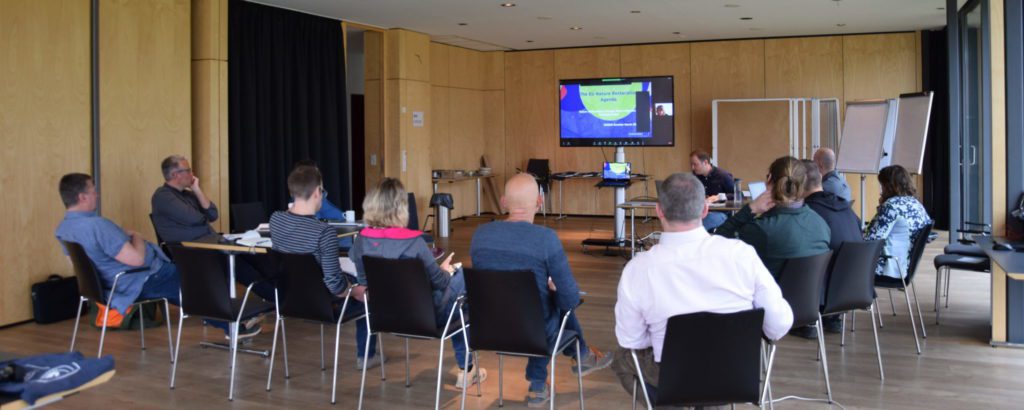
For two extensive days participants worked in teams to find answers to the following questions:
- What are the benefits of nature restoration for communities?
- How to implement nature restoration (from a governance perspective)?
- What are the key roles of Protected Areas (managers) in nature restoration?
- How can restoration projects be set up?
There was a balance of presentations held and prepared by the participants, as well as group work. Of course, the Seminar also facilitated networking and informal exchange.
The work of participants has resulted in a PowerPoint presentation that gives the answers to the above questions and also details what the opportunities are for Protected Areas concerning nature restoration. It should serve as a resource for Protected Area managers to underline the key role their Parks have to play in restoration efforts.
Know your worth
One thing that was underlined during the seminar, is that Protected Areas are not just “another interest group” when it comes to nature restoration, they are the experts! On that basis, the Siggen Seminar participants identified the following key roles for Protected Areas:
- Protected Area management teams are experienced and skilled ecosystems caretakers. They have the know-how to support, lead and inspire restoration projects. They have the ability and governance tools to plan, implement and monitor them to ensure success.
- Protected Areas offer high quality reservoirs of diverse species and functional habitats and ecosystems. They can serve as a model and a source to be connected to restored areas.
- Protected Areas are, or can be, living labs for nature restoration projects. Their features and structures are well suited to incubate pilot projects, demonstrate what is possible to achieve and share learnings and successes.
- Being a connection between people and nature in living land- & seascapes, Protected Areas can help communicate and collaborate with communities to foster ownership, pride, and involvement in nature restoration projects at a local level. They can help communities thrive, be rewarded and celebrate success!
- Bring in resources and funds for restoration to drive action. Protected Areas can be a bridge between local, regional, and global activities and networks and help secure both funding, and implementation.
You can find the PowerPoint presentation with all the outcomes here.
Presentations
All presentations held by our experts and participants can be found here:
Olivier de Sadeleer – Introduction to the Siggen Seminar
Angelika Rubin – Nature Restoration at EU Level
Ben Ross – Nature Restoration in Scotland
Elliott Lorimer – Restoration at Forest of Bowland
John van den Berg – River Restoration in the Netherlands
Santtu Kareksela – National scale prioritization and spatial planning in Finland
